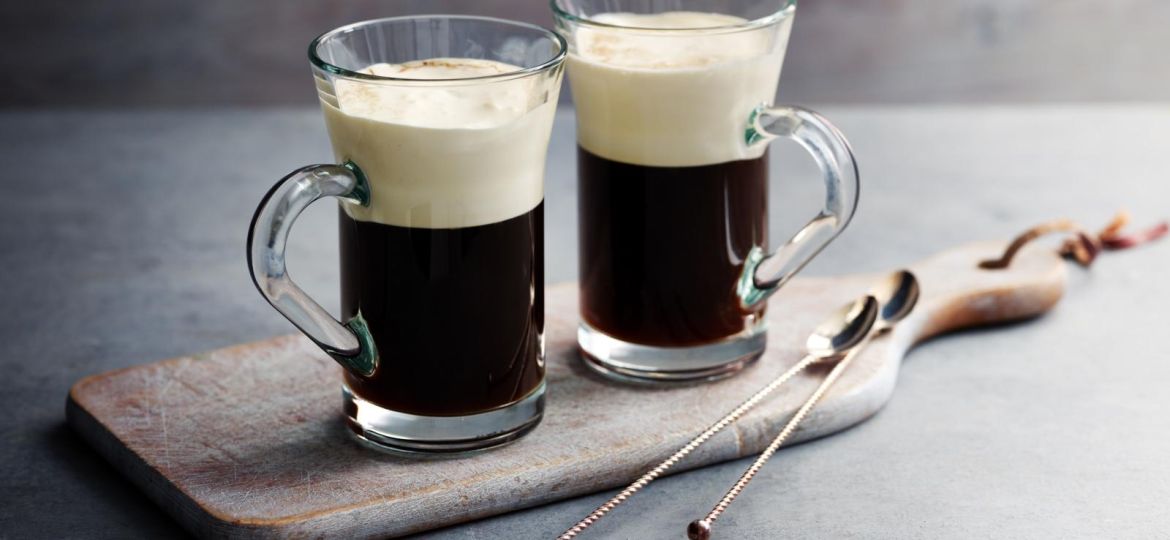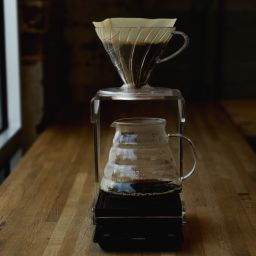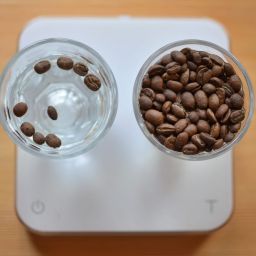
Irish Coffee, a delightful fusion of robust coffee and smooth Irish whiskey, stands as a testament to creativity in the world of beverages. Not just a drink, but a symbol of innovation, it bridges the gap between the coffee and liquor worlds. This guide delves into the intricacies of Irish Coffee, from its storied origins to the art of perfecting its creation, catering specifically to the discerning palate of coffee enthusiasts.
You want to know how to make Viennese Coffe? Learn in this blog post.
Essential Ingredients of Irish Coffee
The magic of Irish Coffee lies in its simplicity and the quality of its ingredients. The key components include hot freshly brewed coffee, Irish whiskey, brown sugar, and lightly whipped cream. The choice of coffee is crucial; a robust, richly flavored brew works best, providing a strong foundation for the drink. Equally important is the Irish whiskey, known for its smoothness and slight sweetness, which complements the coffee rather than overpowering it.
Brown sugar adds a hint of molasses flavor, enriching the overall taste profile. It also helps in creating a layering effect when the cream is poured over the back of a spoon, floating atop the coffee. The cream, preferably fresh and lightly whipped, adds a luxurious texture and balances the drink’s potency.
For those with dietary restrictions, alternatives are available. Decaffeinated coffee can substitute regular coffee, while non-alcoholic whiskey flavorings offer a similar taste profile without alcohol. Similarly, dairy-free cream options can be used for a vegan-friendly version. The essence of Irish Coffee, however, remains in the harmony of these four components, each playing a pivotal role in creating this classic beverage.
Step-by-Step Guide to Making Irish Coffee
1. Preparing the Glass: Begin by warming a clear, stemmed glass with hot water. This ensures that the coffee stays hot while serving.
2. Brewing the Perfect Coffee: Brew a strong, rich coffee – preferably a dark roast for its depth of flavor. Pour the hot coffee into the warmed glass, filling it about three-quarters full.
3. Blending Whiskey and Coffee: Add a measure (about 1.5 ounces) of Irish whiskey to the coffee. The whiskey should be of good quality, as its flavor is crucial to the drink’s overall profile.
4. Adding Sugar: Stir in a teaspoon of brown sugar. The sugar must dissolve completely to ensure the right balance of sweetness and to help the cream float on top.
5. Cream Topping: Lightly whip the cream until it begins to thicken but is still pourable. Then, holding a spoon upside down over the glass, gently pour the cream over the back of the spoon. The cream should float on top, creating a distinct layer.
6. Presentation: Serve the Irish Coffee without stirring. The idea is to drink the coffee through the cream, enjoying the contrast between the hot, rich coffee and the cool, smooth cream.
7. Garnishing: While traditional Irish Coffee doesn’t require garnish, a sprinkle of nutmeg or cinnamon can be added for an aromatic touch.
Variations of Irish Coffee Around the World
Irish Coffee, while deeply rooted in its Irish origin, has inspired a multitude of variations across the globe. Each region adds its unique twist, reflecting local tastes and traditions.
- Scottish Coffee: Similar to the Irish version, but with Scotch whisky, offering a smokier flavor.
- Kentucky Coffee: Uses bourbon instead of Irish whiskey, giving it a distinctive American twist with a sweeter, fuller body.
- Canadian Coffee: Made with Canadian whisky, which is typically smoother and lighter, and sometimes includes maple syrup for added Canadian flair.
- Caribbean Coffee: A tropical variant that features dark rum instead of whiskey, infusing a sweet and robust flavor typical of the Caribbean.
- European Variants: In countries like Spain and Italy, local brandies or liqueurs are used, adding a regional signature to the drink.
These variations not only demonstrate the versatility of Irish Coffee but also how a simple concept can be adapted to suit different palates and preferences worldwide.
Pairing Irish Coffee with Food
The rich and complex flavors of Irish Coffee make it an excellent companion to various foods. It pairs exceptionally well with desserts, especially those with chocolate, caramel, or nutty flavors. Chocolate cake, tiramisu, or walnut brownies can complement the coffee and whiskey notes.
For a savory pairing, consider cheese platters featuring aged cheeses like Gouda or Cheddar, which balance the drink’s sweetness with their sharpness and depth. Irish Coffee can also be a delightful end to a hearty meal, offering a balance of warmth and richness that rounds off the dining experience.
Irish Coffee in Modern Coffee Culture
In today’s diverse coffee culture, Irish Coffee holds its own as both a traditional and a trendy choice. It appeals to those who appreciate classic coffee drinks and those looking for something more adventurous than a standard espresso or latte. Modern coffee shops often feature Irish Coffee on their menus, sometimes with innovative twists like infusing the cream with vanilla or other flavors.
Irish Coffee also resonates with the craft cocktail movement, with bartenders and baristas collaborating to elevate its presentation and flavor profile. This cross-pollination of coffee and cocktail cultures has helped keep Irish Coffee relevant and exciting for new generations of coffee and whiskey aficionados.
Conclusion
Irish Coffee exemplifies the perfect blend of tradition and innovation. Whether enjoyed in its classic form or through one of its global variations, it offers a rich, multi-sensory experience. This guide aims to inspire both the novice and the seasoned coffee enthusiast to explore the world of Irish Coffee, appreciating its history and savoring its timeless charm.









